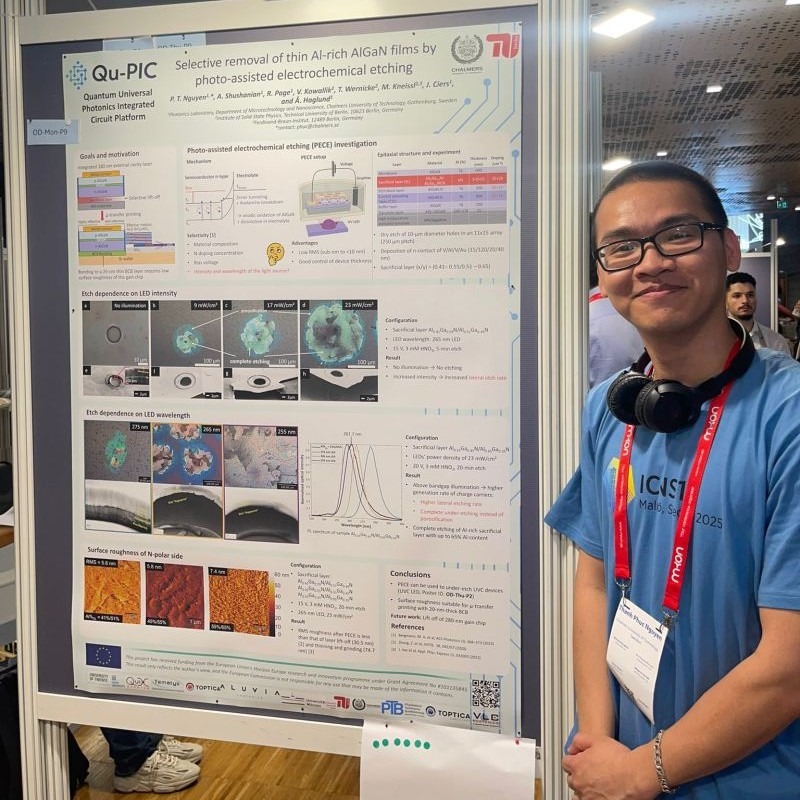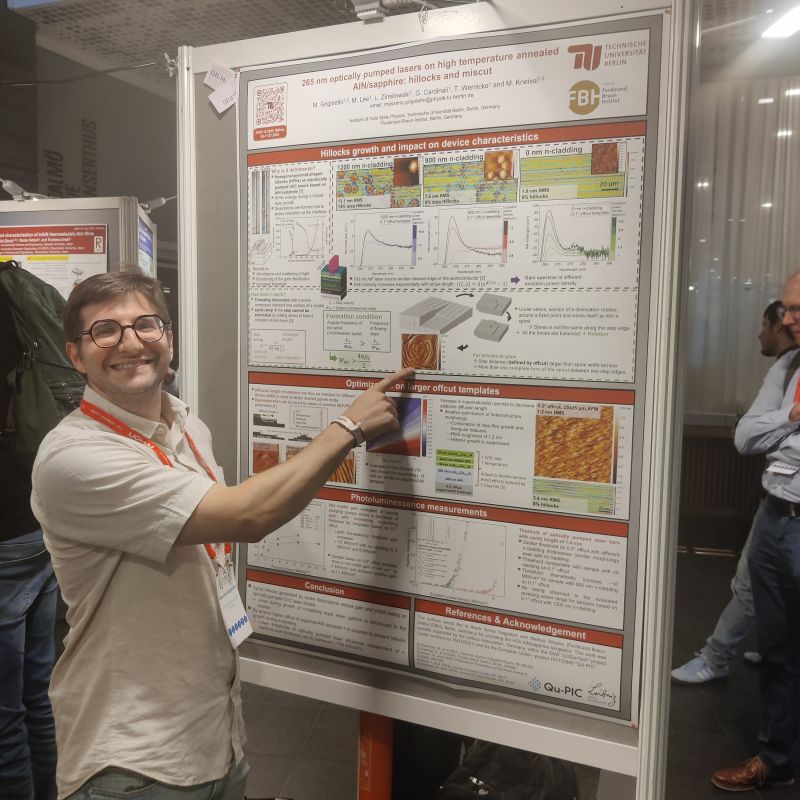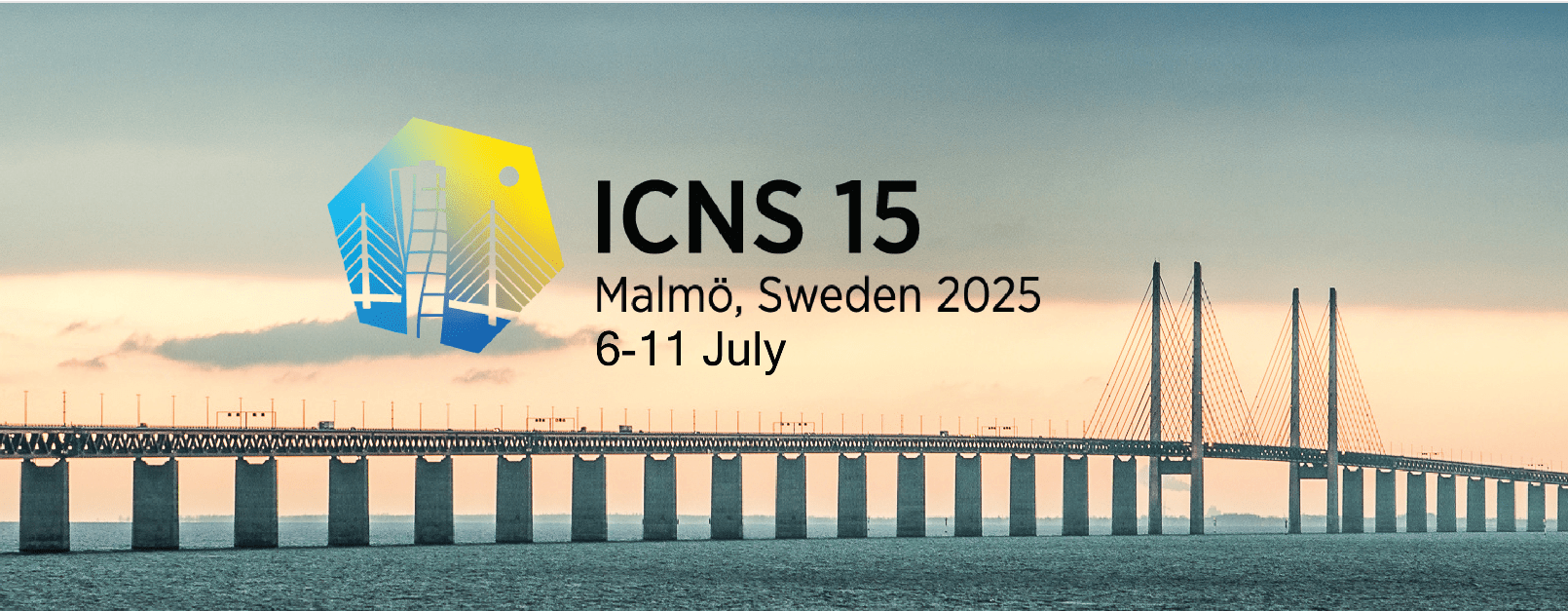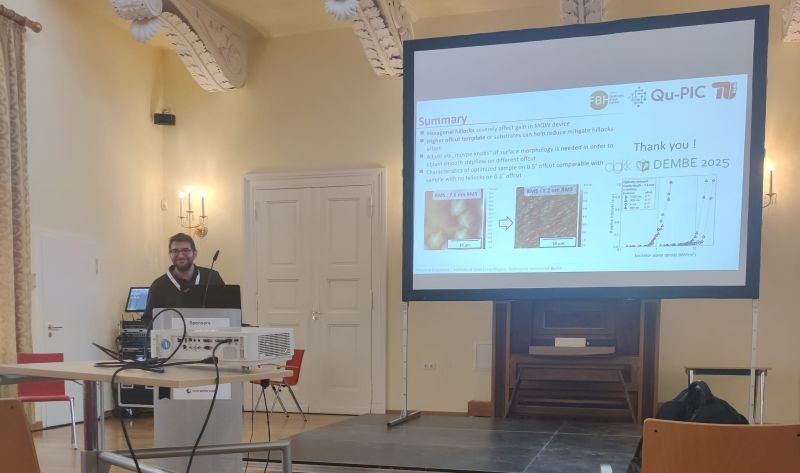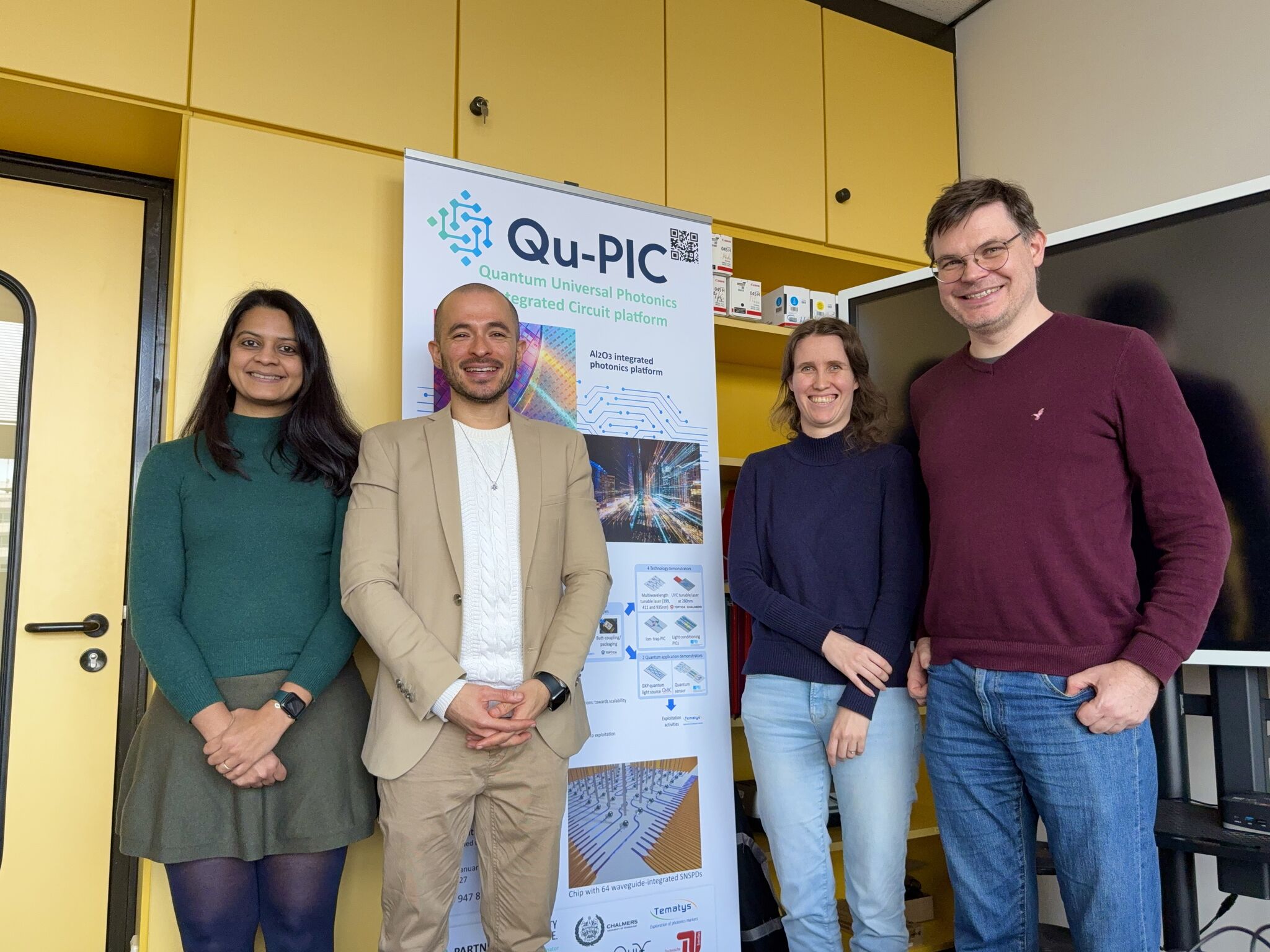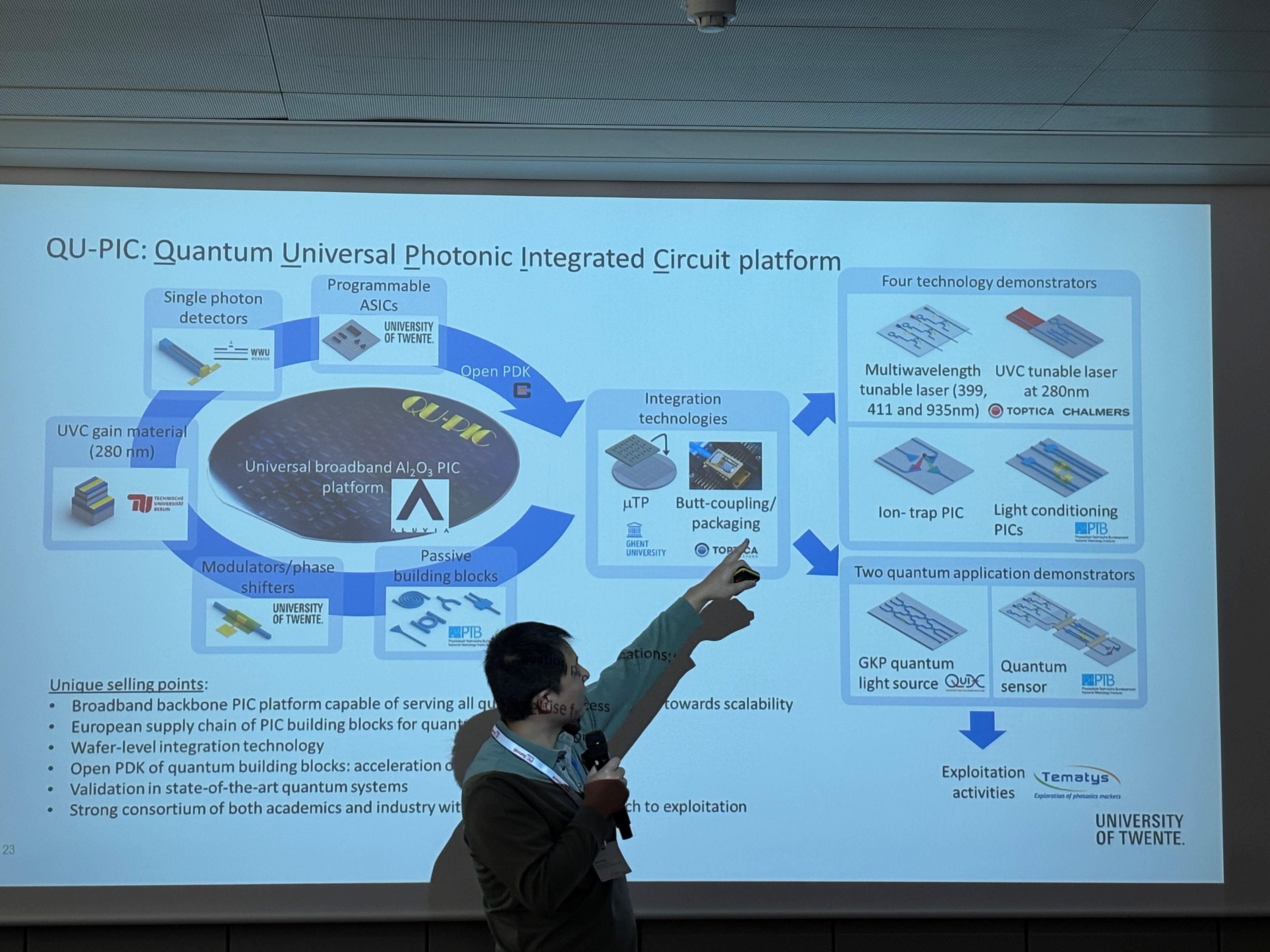Qu-PIC at the 15th International Conference on Nitride Semiconductors (ICNS-15)
Last week, some of the greatest minds in the field gathered in Malmö, Sweden, to celebrate the 15th International Conference on Nitride Semiconductors (ICNS-15).
Qu-PIC – Horizon Europe was well represented by 𝗧𝗵𝗮𝗻𝗵 𝗣𝗵𝘂𝗰 𝗡𝗴𝘂𝘆𝗲𝗻 from Chalmers University of Technology and Massimo Grigoletto from Technische Universität Berlin.
Thanh’s poster presented a 𝘀𝗲𝗹𝗲𝗰𝘁𝗶𝘃𝗲 𝗹𝗶𝗳𝘁-𝗼𝗳𝗳 𝗮𝗽𝗽𝗿𝗼𝗮𝗰𝗵 𝗳𝗼𝗿 𝗨𝗩𝗖 𝗱𝗲𝘃𝗶𝗰𝗲𝘀, 𝗲𝗻𝗮𝗯𝗹𝗶𝗻𝗴 𝘀𝗰𝗮𝗹𝗮𝗯𝗹𝗲 𝗶𝗻𝘁𝗲𝗴𝗿𝗮𝘁𝗶𝗼𝗻. This novel approach overcomes a long-standing hurdle in fabricating deep‑UV (UVC) emitters: the selective lift‑off of Al‑rich AlGaN layers. Using photo‑assisted electrochemical etching (PECE), Thanh’s team achieved complete etching of sacrificial layers with up to 65% Al content, without damaging adjacent layers.
This breakthrough paves the way for thinner, smoother membranes that support next‑generation 𝗨𝗩𝗖 𝗟𝗘𝗗𝘀, 𝗩𝗖𝗦𝗘𝗟𝘀, 𝗮𝗻𝗱 𝗶𝗻𝘁𝗲𝗴𝗿𝗮𝘁𝗲𝗱 𝗽𝗵𝗼𝘁𝗼𝗻𝗶𝗰 𝗽𝗹𝗮𝘁𝗳𝗼𝗿𝗺𝘀. By enabling more compact and efficient devices, it opens new opportunities in disinfection, environmental sensing, and advanced communication technologies.
Massimo’s poster, on the other hand, focused on optimizing 𝗨𝗩𝗖 𝗹𝗮𝘀𝗲𝗿 𝗽𝗲𝗿𝗳𝗼𝗿𝗺𝗮𝗻𝗰𝗲 𝘁𝗵𝗿𝗼𝘂𝗴𝗵 𝘀𝘂𝗯𝘀𝘁𝗿𝗮𝘁𝗲 𝗲𝗻𝗴𝗶𝗻𝗲𝗲𝗿𝗶𝗻𝗴. He demonstrated how controlling surface morphology can dramatically improve the performance of AlGaN-based UVC lasers. By systematically varying the sapphire substrate miscut angle and cladding layer thickness, Massimo’s team showed that reducing hexagonal hillocks leads to smoother growth surfaces and significantly lower pumping thresholds.
Lasers grown on 0.5° offcut substrates exhibited step‑flow growth with minimal roughness and achieved net modal gains of ~40 cm⁻¹ at 5 MW/cm², requiring far less excitation power than devices on lower offcut substrates. These findings highlight how precise substrate engineering can unlock 𝗵𝗶𝗴𝗵𝗲𝗿 𝗲𝗳𝗳𝗶𝗰𝗶𝗲𝗻𝗰𝘆 𝗮𝗻𝗱 𝗿𝗲𝗹𝗶𝗮𝗯𝗶𝗹𝗶𝘁𝘆 𝗶𝗻 𝗻𝗲𝘅𝘁‑𝗴𝗲𝗻𝗲𝗿𝗮𝘁𝗶𝗼𝗻 𝗨𝗩𝗖 𝘀𝗼𝘂𝗿𝗰𝗲𝘀.
Visit our website for more information on Chalmers’ and TU Berlin’s contributions to Qu-PIC 👉 https://lnkd.in/dmZVHNXn
